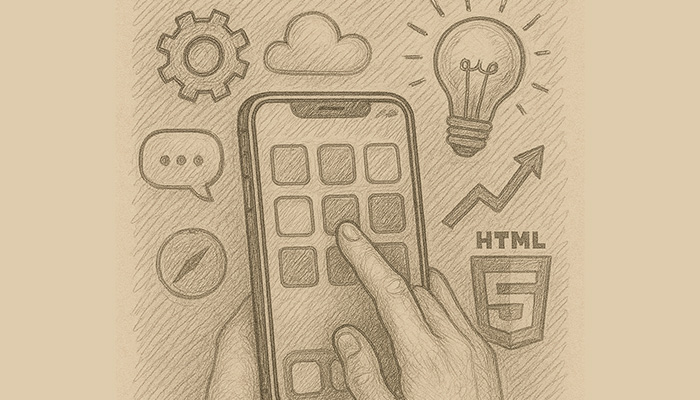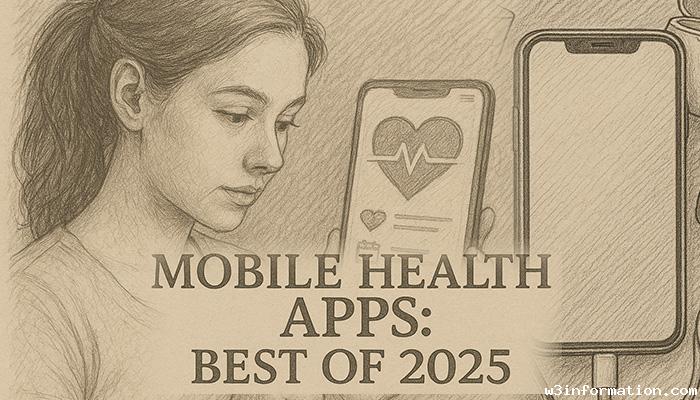Mobile App Development: Trends and Tools
Recent years have brought substantial transformations to mobile app development which stem from technological advancements and changes in how users interact with their devices. The continuous role of smartphones in our daily routines has led to unprecedented demand for mobile apps that deliver quality performance and provide an intuitive user experience. For developers working on iOS and Android apps the success depends on keeping up-to-date with current trends and using top development tools. This blog provides insights into the dominant trends that are transforming the mobile app development industry while outlining the crucial tools developers need to create innovative applications.
Current Trends in Mobile App Development
a. Cross-Platform Development
The popularity of cross-platform development frameworks such as Flutter and Xamarin and React Native has surged because developers can build single codebase applications that operate on both iOS and Android platforms. Developers benefit from faster development cycles and lower costs because they maintain a single application that spans multiple platforms.
- Flutter: Developers praise Flutter for its rapid development capabilities alongside stunning user interface components.
- React Native: The support from Facebook allows React Native to deliver native-like performance while providing developers access to a comprehensive library ecosystem.
- Xamarin: Xamarin delivers native performance capabilities and ensures seamless integration with Microsoft technologies.
b. 5G and Mobile App Development
The deployment of 5G networks is set to transform mobile app performance through its superior speed and minimal latency. Mobile applications will process more demanding operations including augmented reality (AR), real-time video streaming, and cloud gaming with enhanced speed and reduced latency.
- Improved Speed: Faster download/upload speeds for media-heavy apps.
- New Opportunities: 5G technology introduces enhanced possibilities for demanding data applications including virtual reality (VR), augmented reality (AR), Internet of Things (IoT), and artificial intelligence (AI).
- Mobile applications are becoming smarter through the integration of Artificial Intelligence (AI) technologies alongside Machine Learning (ML) algorithms.
The combination of AI and ML technologies with mobile applications creates new user experiences through personalized services and automated intelligence. AI and ML enable applications to customize user interactions based on behavior patterns while improving app performance and creating more intuitive experiences.
- Personalized Recommendations: AI-driven algorithms for personalized content.
- Voice Assistants: AI technology enables voice recognition that allows users to interact with apps without using their hands (Siri and Google Assistant are examples).
- Image Recognition: Massive learning models drive facial recognition technology as well as augmented reality and object detection mechanisms.

d. App Security
The collection and storage of sensitive user data by mobile apps necessitate top-tier security measures. To protect user information developers are now placing greater emphasis on enhanced security mechanisms such as biometric authentication along with data encryption and two-factor authentication (2FA).
- Biometric Authentication: Enhanced security systems utilize fingerprints and facial recognition methods.
- End-to-End Encryption: Protection of app communications becomes critical when dealing with both messaging services and payment platforms.
Augmented Reality and Virtual Reality technologies are rapidly expanding their presence across multiple industries including gaming, retail, and healthcare applications.
The advancement of AR and VR technologies has become especially prominent in applications ranging from gaming to retail to healthcare. The launch of ARCore for Android devices and ARKit for iOS devices enables developers to build immersive real-time experiences for users.
- Retail Apps: Virtual try-ons in e-commerce apps.
- Gaming Apps: Enhanced gaming experiences through AR and VR.
- Education Apps: Immersive learning experiences using AR and VR.
f. Wearable Technology Integration
Mobile applications now frequently incorporate seamless functionality with wearable devices like smartwatches and fitness bands due to their increasing popularity. Fitness, health monitoring, and productivity apps demonstrate this trend more than other types of applications.
- Fitness Trackers: Fitness tracking applications that connect with wearable devices including Fitbit, Apple Watch and Garmin.
- Health Monitoring: The ability to monitor health metrics in real-time includes heart rate tracking and sleep pattern analysis.
Essential Tools for Mobile App Development
a. Android Studio
The official platform for developing Android applications is the Integrated Development Environment known as Android Studio. The program delivers complete sets of tools necessary for developing, testing and debugging Android applications.
Features:
- The development environment features code completion tools alongside refactoring utilities and a user-friendly interface.
- The development environment includes an integrated emulator to test applications on multiple Android device configurations.
- Strong integration with Google services and Firebase.
b. Xcode
Apple's official integrated development environment for iOS application development is Xcode. The development environment offers a complete set of tools to create applications for iPhones, iPads, Apple Watches, and Apple TVs.
Features:
- Interface Builder for designing app UI.
- Swift programming language support.
- The iOS simulator allows testing applications on various devices through integration.
c. React Native
React Native enables developers to create apps that run on both iOS and Android through JavaScript and React. Developers use this popular framework to create high-performance applications for both iOS and Android operating systems with one shared codebase.
Features:
- Rich set of pre-built components.
- The development platform has a vast developer base along with extensive support for third-party libraries.
- Hot-reload for fast iteration during development.
d. Flutter
Google offers an open-source UI toolkit called Flutter which allows developers to build natively compiled applications for mobile, web, and desktop using a single codebase. This platform has become popular because it offers fast performance while enabling developers to build stunning user interfaces.
Features:
- High performance with native-like speed.
- Extensive set of customizable widgets for design.
- Developers have the ability to build applications for both iOS and Android platforms utilizing a single codebase.
e. Firebase
Google provides Firebase as a robust backend platform aimed at mobile and web application development. This service offers multiple development tools which encompass real-time databases together with authentication solutions and analytics systems.
Features:
- Store data easily with Firebase's Realtime database and Firestore solution.
- Firebase offers authentication services that support login/signup through Google, Facebook, and Twitter. ).
- Firebase Analytics enables developers to monitor user behavior and engagement metrics.
f. GitHub
GitHub plays a vital role in managing version control and enabling collaborative work during mobile app development. Multiple developers can collaborate on the same project with efficiency by utilizing change tracking and collaboration support.
Features:
- Version control to keep track of changes.
- Collaboration tools for team development.
- The platform offers seamless integration with CI/CD pipelines for automated testing and deployment processes.
Challenges in Mobile App Development
a. Fragmentation
Android presents a significant challenge because the platform must support numerous devices that vary in terms of screen sizes, resolutions, and hardware capabilities. The development process requires ensuring apps function properly on multiple devices while maintaining performance standards.
b. User Experience (UX) Design
Creating user-friendly mobile apps with clear navigation and attractive design proves difficult when designers have to work within the constraints of limited screen space. Balancing aesthetics with functionality is crucial.
c. App Store Guidelines and Approval Process
Both the Google Play Store and the Apple App Store enforce strict guidelines when reviewing app submissions. The process of ensuring app compliance takes time and non-compliance leads to potential rejections or launch delays.
Conclusion
The domain of mobile app development remains thrilling and dynamic as ongoing technological breakthroughs redefine user interactions. Developers who adopt current trends like cross-platform development and AI integration as well as leverage AR/VR technologies will create applications that satisfy users' expectations regarding speed and security and offer convenience. The use of appropriate tools including Android Studio, Xcode, and Firebase enables developers to optimize their workflow and produce superior mobile applications. Despite obstacles like fragmentation and UX design challenges developers face endless opportunities to create innovative mobile apps which makes this period very exciting for both developers and users.
 DIY Holiday Decor Ideas on a Budget
DIY Holiday Decor Ideas on a Budget
 How to Create a Healthy Meal Plan for the Week
How to Create a Healthy Meal Plan for the Week
 Discover your top 10 comforting meals to enjoy during the winter season
Discover your top 10 comforting meals to enjoy during the winter season
 Tips for Stress-Free Holiday Travel
Tips for Stress-Free Holiday Travel
 Mobile Video Editing Apps to Try
Mobile Video Editing Apps to Try
 Mobile Health Apps: Best of 2025
Mobile Health Apps: Best of 2025